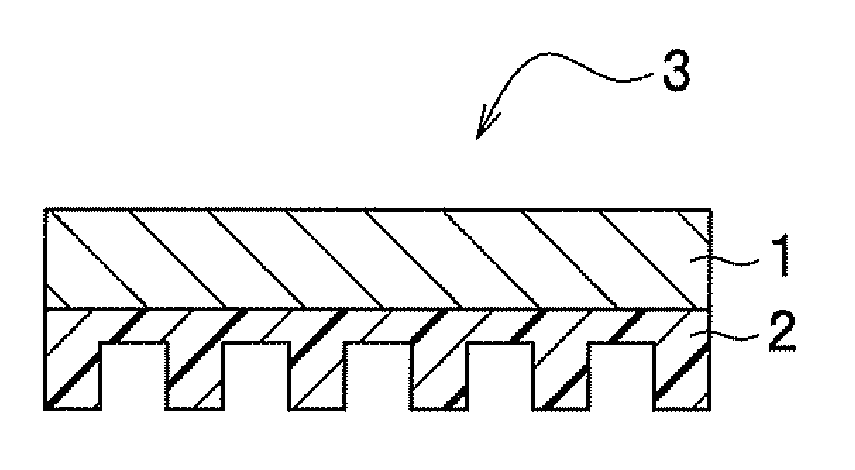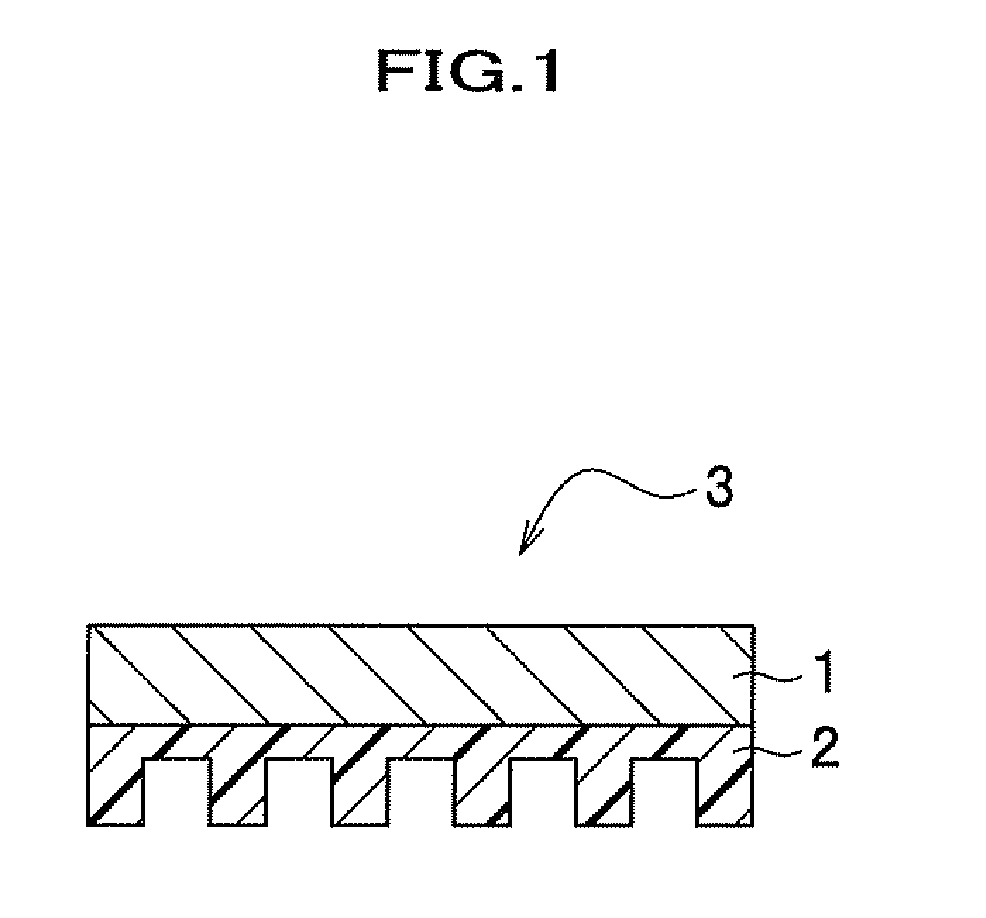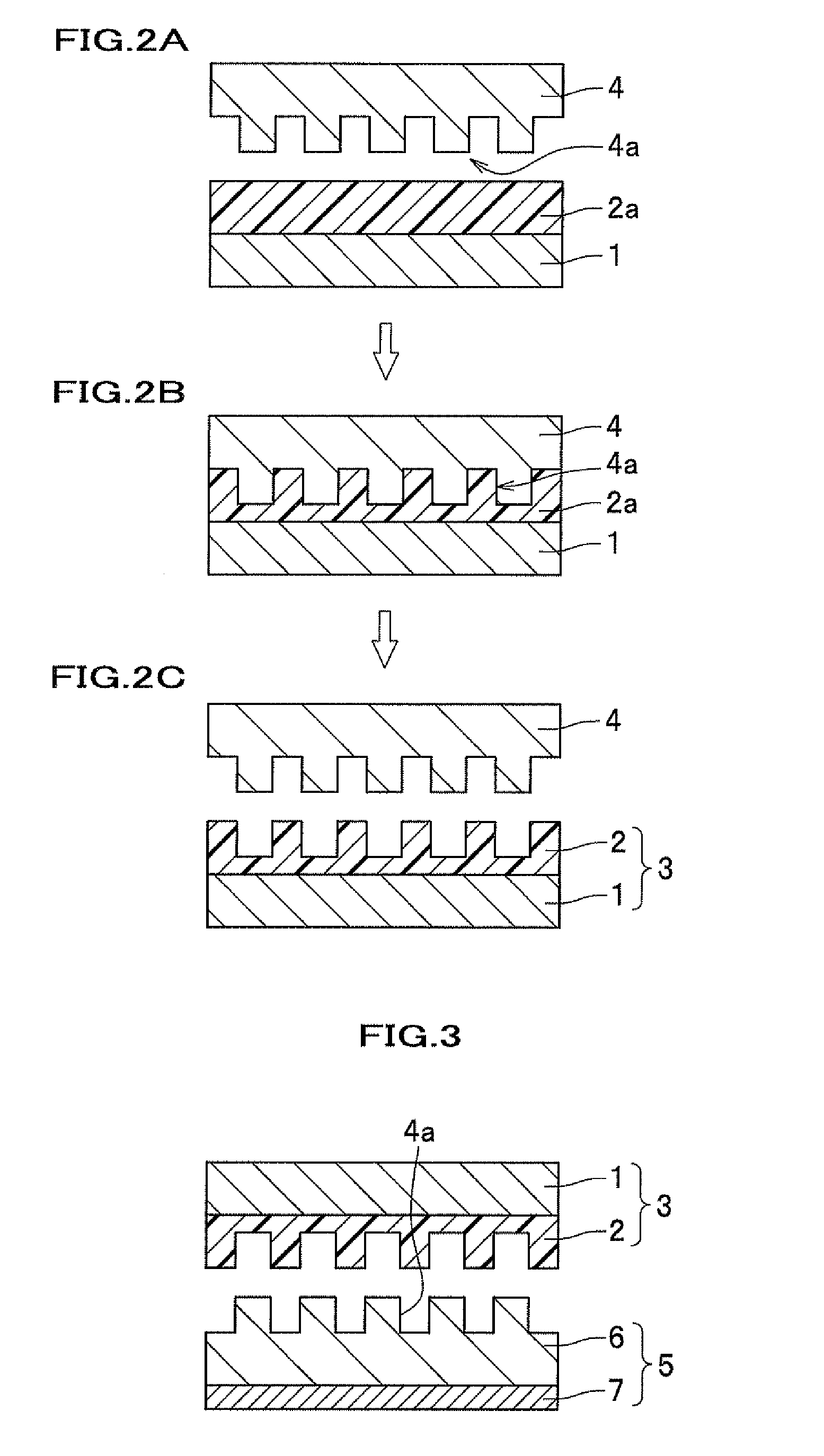Micro-pattern transferring stamper
a stamper and micro-pattern technology, applied in the field of micro-pattern transfer stampers, can solve the problems of reducing throughput, taking a long time to complete the drawing of patterns, and affecting the transfer accuracy of patterns, so as to achieve the effect of not reducing the transfer precision of patterns
- Summary
- Abstract
- Description
- Claims
- Application Information
AI Technical Summary
Benefits of technology
Problems solved by technology
Method used
Image
Examples
examples
[0095]Next, the present invention will be explained in more detail with reference to the examples. Terms “pts” and “%” used in the following explanation are all mass standards except that there is a special indication.
first example
[0096]According to this example, the micro-pattern transferring stamper 3 was produced through the processes shown in FIGS. 2A to 2C.
[0097]2a>
[0098]First of all, as shown in following table 1, 0.7 pts of silsesquioxane derivative OX-SQ SI-20 (made by TOA GOSEI Corporation, indicated as SQ(a) in table 1. The same is true of the following explanation) having a plurality of oxetanyl groups, 0.3 pts of 3-ethyl-3-{[3-ethyloxetane-3-yl]methoxymethyl}oxetane (made by TOA GOSEI Corporation, indicated as monomer element (a) in table 1. The same is true of the following explanation) that was bifunctional oxetane as the monomer element, and 0.06 pts of ADEKA OPTOMER-SP-172 (made by ASAHI DENKA Corporation, simply indicated as “polymerization initiator” in table 1. The same is true of the following explanation) as a cationic polymerization initiator were blended to prepare a photo-curable resin composition 2a for forming a microstructure layer 3.
[0099]The functional group equivalent amount [...
second example
[0109]In this example, the micro-pattern transferring stamper 3 having the microstructure layer 2 was produced through the same method as that of the first example. In this case, the resin composition 2a was prepared through the same way as that of the first example except that the silsesquioxane derivative OX-SQ SI-20 (made by TOA GOSEI Corporation) indicated as SQ (a) in table 1 was set to be 0.9 pts and instead of the monomer element (a) in table 1, 0.1 pts of 1,4-bis(2,3-epoxypropyl)perfluorobutane (made by DAIKIN Industries Corporation, indicated as monomer element (b) in table 1. The same is true of the following explanation) that was diepoxy having a perfluoro skeleton was used, and the micro-pattern transferring stamper 3 was produced using those materials. Table 1 shows a functional group equivalent amount [g / eq] of the resin composition 2a, and an elastic modulus [Pa], a curing shrinkage percentage [%], and an inorganic fraction [mass %] of the microstructure layer 2.
[0110...
PUM
| Property | Measurement | Unit |
|---|---|---|
| Percent by mass | aaaaa | aaaaa |
| Percent by mass | aaaaa | aaaaa |
| Shrinkage | aaaaa | aaaaa |
Abstract
Description
Claims
Application Information
 Login to View More
Login to View More - R&D
- Intellectual Property
- Life Sciences
- Materials
- Tech Scout
- Unparalleled Data Quality
- Higher Quality Content
- 60% Fewer Hallucinations
Browse by: Latest US Patents, China's latest patents, Technical Efficacy Thesaurus, Application Domain, Technology Topic, Popular Technical Reports.
© 2025 PatSnap. All rights reserved.Legal|Privacy policy|Modern Slavery Act Transparency Statement|Sitemap|About US| Contact US: help@patsnap.com



